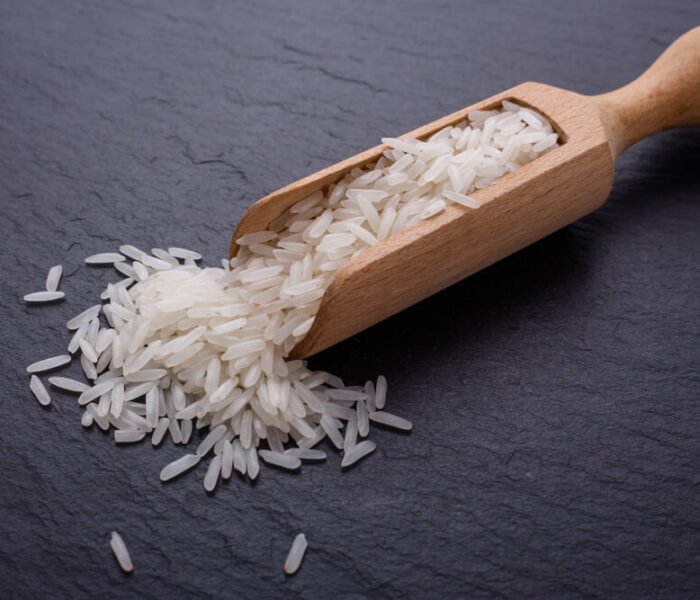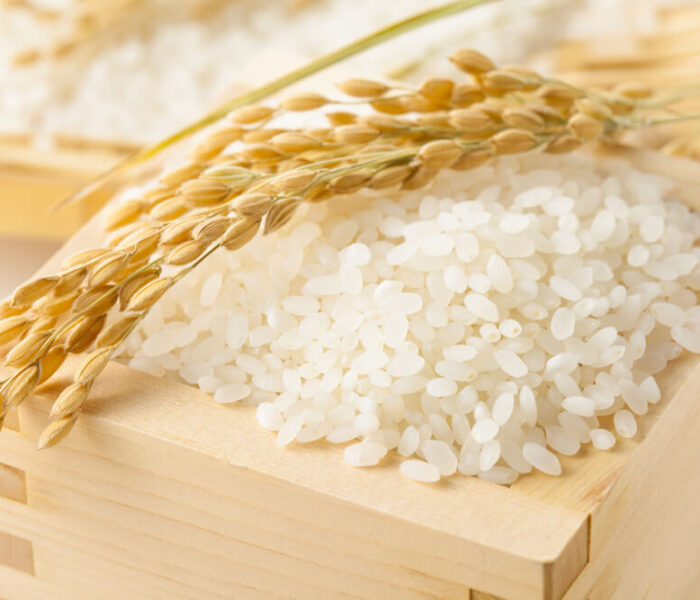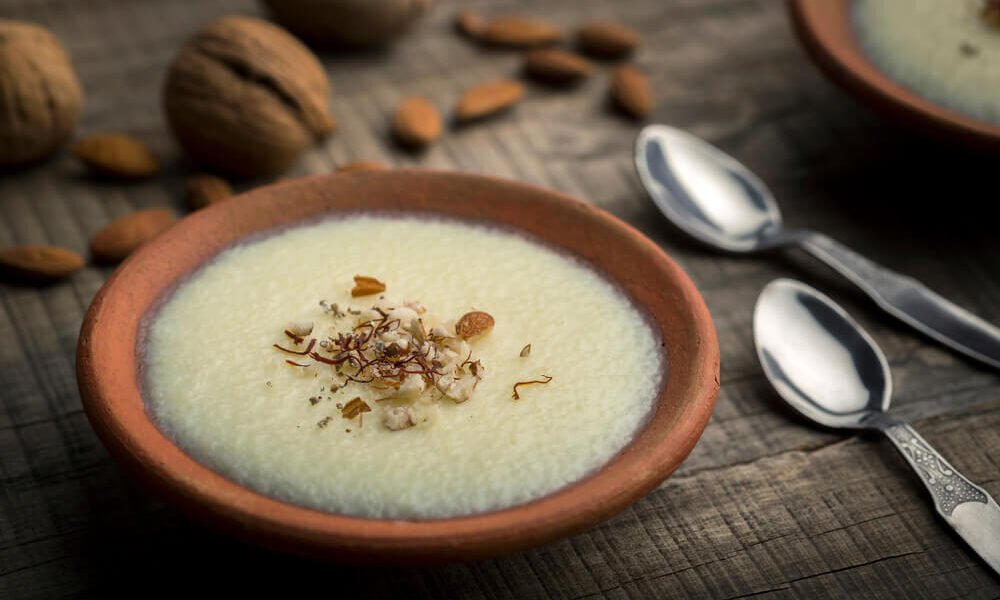Today I’ve here for you a very special dessert recipe from my childhood… Rice Pudding Without Eggs. No matter which part of the globe we have grown up in, we all have a distinct childhood memory of having the creamy and rich dessert, made by our mothers for family feasts or special occasions. Having the sweet delicacy at the dinner table surrounded by family, and no matter how much was made it always ended with someone fighting over not getting enough of it.
Though every region has its variation and method of making this scrumptious dessert the basis of it remains the same Rice and Milk (or at times milk from nuts are used). This gives a contrast to the texture of the final form of the recipe apart from the flavors as well.
Using the right type of rice to make any food is very important as it would affect not just the look of the dish but also its texture, taste. As different rice needs to be cooked in different cooking methods so it will affect the final result of the dish.
Usually, for rice pudding, the best type of rice that we should use is medium to short-grain variety as it has more gluten and starch present which will thicken the pudding. To make amazing rice pudding Jasmine Rice, Glutinous/ Sticky Rice, or Japanese Rice is the way to go.
Rice Pudding Without Eggs VS With Eggs
To come up with a simple concept of the pudding is next to impossible as the way it’s been made from region to region is completely different. If we take North American, European and some South American cuisine, pudding primarily is made using custard as its base, which is egg, dairy, and sugar; thickening it with starch to give it that silky yet thick consistency.
But in the Asian and Mediterranean regions Traditional puddings are at times made using only starch as a thickener such as Rice, Tapioca, and cornflour; omitting egg altogether. Usually these types of putting end up being very thick, sticky with whole rice grains. Though tasting amazing with a bite to it, it lacks the silky texture that I love in traditional puddings.
In this recipe, we will be combining both cooking elements to form a silky rice pudding without egg yet making it very silky and thick at the same time. This will be done by cooking the rice in heavy cream and using broken rice and then blending the rice as its cook, giving it a more thick yet silky texture.
The Best Rice For Rice Pudding
Jasmine Rice
It is medium-grain rice which is softer than basmati, when uncooked they are translucent. As they cook, it not only keeps separate like long grain rice but is soft and slightly clingy.
As Jasmine rice is best cooked using the absorption method and has an aromatic flavor once they are cooked it makes them ideal to make rice pudding.

Jasmine Rice
It is medium-grain rice which is softer than basmati, when uncooked they are translucent. As they cook, it not only keeps separate like long grain rice but is soft and slightly clingy.
As Jasmine rice is best cooked using the absorption method and has an aromatic flavor once they are cooked it makes them ideal to make rice pudding.

Thai Sticky Rice Or Glutinous Rice
One of the most underrated medium grain rice, Thai sticky/ Glutinous rice is opaque white with a slightly sweet taste and sticks to itself but not to your hands once cooked. Traditionally it is soaked overnight in cold water, then steam over boiling water giving it a very good flavor. You can use the short-cut method instead and soak in very warm water for two hours.
Japanese Rice
Medium grain rice looks rounded and relatively short and wide with a translucent and slightly glassy look, and a few will have a small opaque white patch. Japanese rice absorbs less water than other varieties. When properly cooked, it tends to be very slightly sticky and to clump together a bit. It is firm to the bite yet tender, and never mushy. Before cooking they need to rinse thoroughly and then let it stand or soak for twenty to thirty minutes.

Japanese Rice
Medium grain rice looks rounded and relatively short and wide with a translucent and slightly glassy look, and a few will have a small opaque white patch. Japanese rice absorbs less water than other varieties. When properly cooked, it tends to be very slightly sticky and to clump together a bit. It is firm to the bite yet tender, and never mushy. Before cooking they need to rinse thoroughly and then let it stand or soak for twenty to thirty minutes.
FAQs About Rice Pudding
While searching on the internet, I came across so many questions that people ask while making rice pudding. I’ve tried to answer a few of them here. And If you have further queries related to your rice pudding with or without eggs drop them in the comment section and I would love to answer them.
Rice Pudding Texture... Grainy or Creamy?
This is one of the most difficult questions to answer, but I would say it all depends on how you want to use it. Either has it as a dessert on its own or it can be used as a sauce in a plated dessert. Rice pudding can be very versatile in how you want it to be. If you want a more traditional style rice pudding, cook the rice till they are tender. You can be more adventurous and make it as a base to accompany a mango or coconut ice cream for your modernist dessert-like this recipe which is inspired by Chef Claudio Cracco, owner of Cracco restaurant in Milan.
How to thicken rice pudding?
One of the easy quick fixes to thicken a rice pudding is to add in a tablespoon of rice flour and cook it at a lower temperature. The rice flour will absorb the excess liquid and thicken the pudding rapidly.
How to thin out rice pudding?
As for thinning your rice pudding you can always add in some additional cream or milk and reheat the rice pudding. Another way you can do to fix hard rice pudding is by folding in some whipped cream (Soft Peak) into it will not only thing the pudding but all aerate it making it lighter.
How to keep rice pudding from sticking to the pan?
One basic rule governs the preparation of any type of pudding to make sure not to cook it at high heat or an internal temperature of (85 to 90°C). At higher temperatures, the fat molecules in the heavy cream will start to burn which we want to avoid. This would increase the cooking time but the result is worth it.
Ingredients You'll Need For Rice Pudding Recipe
Heavy cream 1000 ml
Jasmine rice 80 gm
Sugar 120 gm
Vanilla Bean, split ½
Almond extract 5 ml
Heavy cream, whipped to soft peaks (optional) 180 ml
YIELD: 1000 ml
Serving: 6 to 8
Instructions
- Using the mortar pestle, break and grind the Rice into a quarter of its original size. Alternatively, you can use a grinder, you can give the rice a few blitzes and break them into smaller pieces. Be careful to avoid grinding the rice into flour that will affect the final result of the pudding.
- In a heavy pot or a dutch oven add in 1000 ml of heavy cream and heat it at medium-low temperature till it starts to simmer (around 80 C).
- Split the vanilla pod from the middle using a paring knife and scrape the seed out using the tip of the knife. Add in the vanilla pod, sugar, and into the heavy cream as it is about to simmer and whisk them in.
- Once whisked add in the rice and lower the temperature to low. Cook the rice covered till the rice is tender and in between string it occasionally to make sure it does not scorch.
- Once the rice is tender, take the pudding off the heat. Using an emulsion blender or a regular blender, blend the rice pudding until it’s smooth.
- At this point, if the pudding is at the desired thickness you require you can dish it out in a bowl to let it cool on the table or at room temperature.
- If you want to thicken it more, put it back on the stove on low heat and cook it till your desired thickness. Always remember the pudding will thicken more once it’s cooled down.
- Once the pudding reaches room temperature, fold the whipped cream into the pudding gently quarter at a time, so it does not lose its air. This will lighten the pudding giving it a more silky texture.
Once all whipped cream is folded in you can now portion it in any bowl or ramekin you can serve it warm or put it in the fridge to cool for 2 to 3 hours to let it cool.


